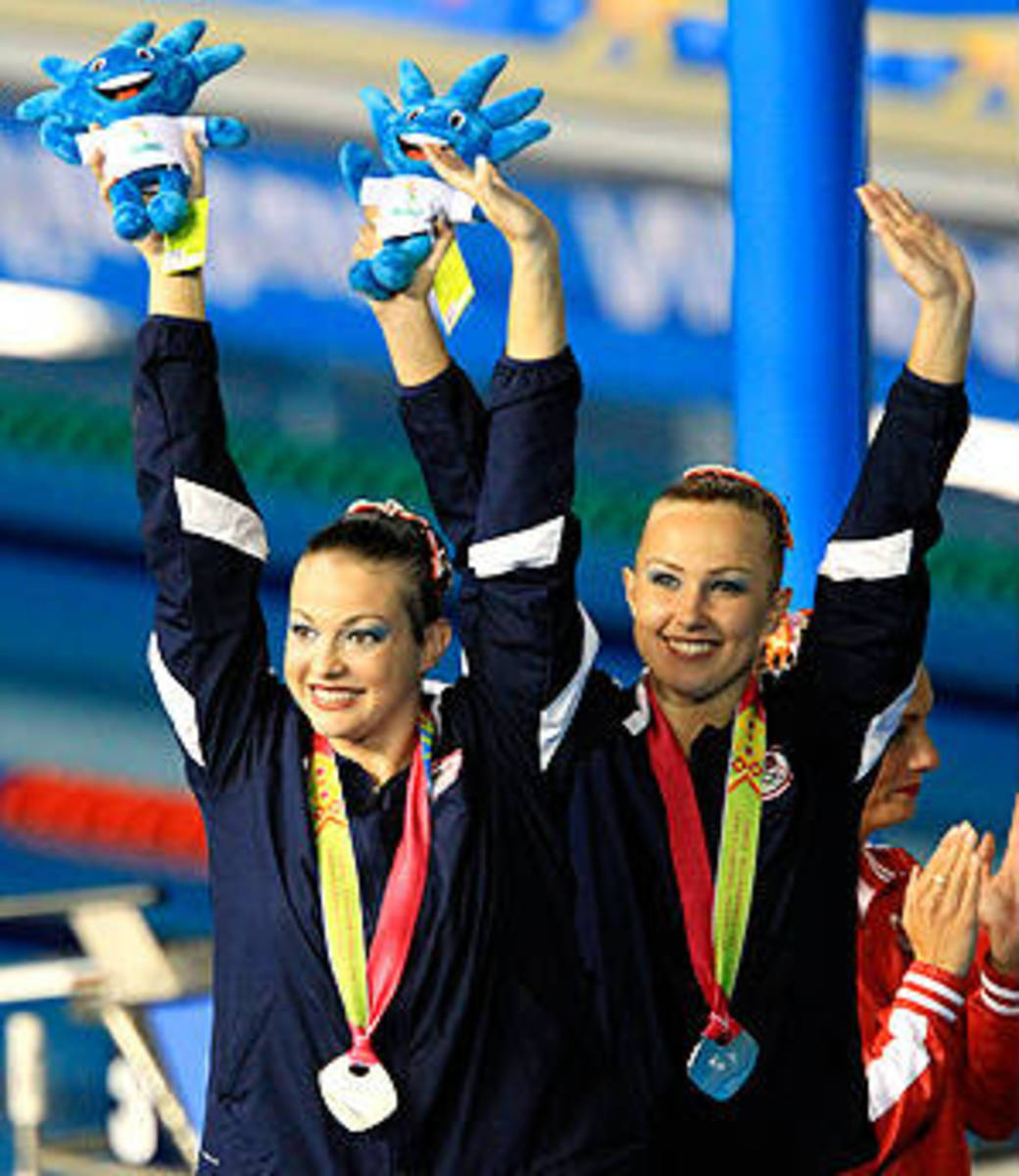Synchronized swimming duet sacrifices normalcy for Olympics
"It's not as easy as it looks," says Mary Killman, a member of the U.S. national team. "Synchro is a theatrical sport, like figure skating, where we have the pretty makeup and the big smiles. But under all that?under water?it's chaos. We're kicking each other like crazy and trying to hold each other up."
For Killman's teammate and duet partner Maria Koroleva, the most challenging part of the sport?and one of synchro's biggest misconceptions?is not ever touching the bottom of the pool. "The pools we swim in are at least nine feet deep," Koroleva says. "There are underwater cameras and referees watching the routine to make sure we never touch the bottom, even by accident."
In order to achieve the breathtaking maneuvers with self-generated power, Killman and Koroleva practice with the national team six days a week for up to twelve hours a day. Even when they're "resting," just listening to their coach speak, the swimmers are still treading water.
"It's not like other sports where you do a drill and then you get to rest," Koroleva says. "In the water you can't stop because you will sink."
The two were paired up just six weeks before the 2011 Pan American Games in Guadalajara, but through this intensive training regimen, Killman and Koroleva took home two silver medals -- one in the duet performance and one in the eight-person team routine. As a pair, they triumphed over duos that swam together at the Beijing Olympics.
"To be able to put something together in that short of a time is amazing. The duets usually swim together for a couple of years to get the chemistry and dynamic that we were able to have," Koroleva says.
The two cultivated an innate understanding of each other by spending nearly every minute together. Aside from practices, Killman and Koroleva also share a room in an apartment. "You have to learn everyone's strengths and weaknesses to be good at this sport," Killman says. "Being around each other as much as we are helps you learn that naturally without too much effort."
Killman and Koroleva had similar starts to their shared Olympic dream, and they both ended up in California, where the most notable synchronized swimming clubs are located. Koroleva was born in Russia and Killman moved from Dallas, and they each began synchronized swimming around age 10. While Koroleva had no previous experience with water sports, Killman says that being a part of the swim team didn't prepare her for the intricacies of synchronized swimming.
"The basics of synchro were absolutely foreign to me," she says. "I remember them trying to teach me how to do spins. I was thinking, I'm upside down, my feet are in the air, and you want me to do what?" Her experience with swimming did give her an edge in the sense that she could tread water and hold her breath, something crucial to synchro, since much of the performance is spent under water.
--
The national team's schedule prevents the Olympic hopefuls from leading what would be considered traditional lives. Their days also include weight training, physical therapy and meetings with a sports psychologist, who helps the swimmers mentally train for competition and teaches them how to communicate better as a team.
Koroleva, who is 21, is taking a year off from Stanford to train with the team, but believes it will all be worth it. "Everything I've done, every decision I've made, has been done in order to get to the Olympics," she says.
And Killman, 20, decided to postpone college altogether. "School will be there when I'm done with my dream," she says. "This has been my goal for so long, that looking past it is kind of scary. I want to be able to go to college, but I have not ruled out trying for 2016 Olympics, as well."
After a less-than-stellar showing in Beijing, the national team mixed it up for 2012, waiting until November to select its Olympic nominees, which are usually chosen two years before the Games. The coming months will be devoted to sculpting duet and team routines that will lead the U.S. to the top of the rostrum in London. This process, according to Koroleva, is tedious.
"All eight people have to do the exact same thing, at the exact same time, at the exact same height," she says. "Some days we'll be working on one move for an hour, just sticking your arm out for an hour because you're not doing it perfect. You're always striving for perfection."
Killman and Koroleva will continue treading to their goal, which is now within a perfectly stretched arm's reach.
"Competing makes it worth it," Koroleva says. "It's that feeling when you're walking out on deck at a competition and the crowd is going wild. You see all the lights. You're representing the U.S. and it's such an honor."
After years of sacrifice and dedication, Killman and Koroleva will perform on the ultimate stage, awing Olympic viewers with their beautiful and precise movements while creating the illusion of ease. The duet knows that the effort they expend will mostly go unnoticed, but Killman believes that this is the true sign of a great team. "The easier it looks, the better you are at it."





